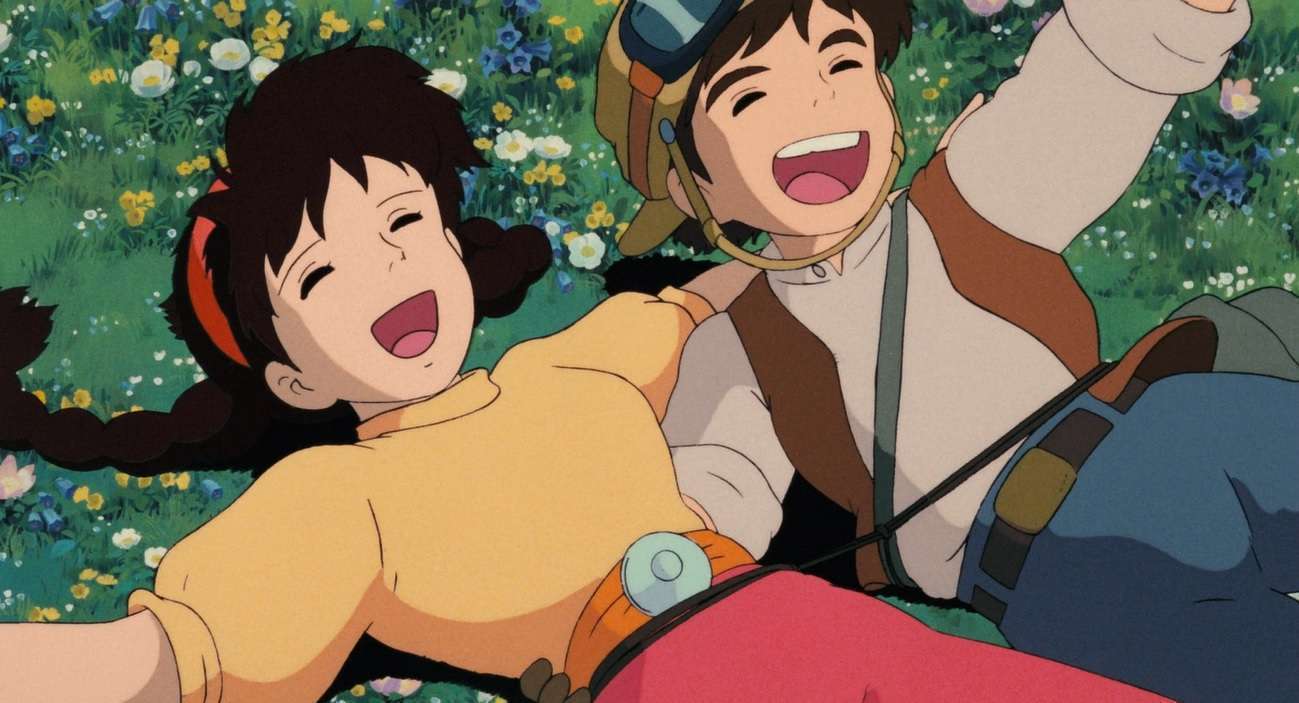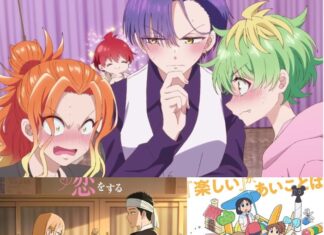Film director Hayao Miyazaki is renowned for a number of recurring themes and motifs in his various works over the decades. One of those is his tendency to avoid having romantic resolution between his female and male protagonists. He has been noted to express his discontent to the “unwritten rule” that stories with male and female protagonists need to conclude with a romantic relationship between them.

Miyazaki’s observation that there is expectation for the main character of a story to have a lover is not unfounded. Not too long ago, for example, there was a criticism on the film Moana (2016) for having its heroine not involved in any romantic relationship (especially compared to other Disney films with princess characters), which the commenter saw as “setting up girls for … disappointing romantic lives.” There still remains a view in society that places romantic relationship as some kind of a required achievement in life, without which one’s life is not yet complete or not satisfying. Romantic relationship appears as if it is more important than any other forms of relationships, such as friendship.
But love is a word of many meaning, and romantic love is only one of it. By examining how and why certain stories avoid to feature romance, we may be able to explore other meanings of love. Take a look at the aforementioned Moana, for example. The film avoids romance by making the most important male character, Maui, performs the role of a mentor figure who teaches the knowledge of sailing to the heroine, Moana. The character developments that they go through in the film are those of a teacher and a disciple rather than lovers.
© Disney
The absence of romance in Moana has led one of my colleagues in KAORI to comment that the film feels fresher and more free. I concur by noting that without having Moana seeking a lover, the film can better illustrate how wide and deep Moana’s love is for her family, the villagers of her island, and even other living things. And it is that kind of universal love which, in the climax, allows her to solve the mystery of Te Ka and saves the world from a curse.
But in Miyazaki’s inaugural Studio Ghibli ouvre, Castle in the Sky (1986), the film arguably took a bolder move than Moana. Where Moana able to avoid romance by having the female and male protagonists of different ages, which directs them into mentor-disciple relationship; Castle in the Sky presses forward with having both its male and female protagonists, Pazu and Sheeta, at about the same age. And in some scenes, Pazu and Sheeta are shown to be very close physically, holding hands and even hugging each other.

But here, the film manages to make such scenes of closeness do not carry romantic connnotations. The key is in the absence of the most commonly used visual indicator of romantic (or sexual) feelings in Japanese animation: blushing. Without any blushing, even the hugging scenes between Pazu and Sheeta do not feel like they incite romantic (or sexual) excitement. Instead, both of them appear as if they were brother and sister, related in their common background as orphans and their ties to the mystery of Laputa, even if they are not related by blood.
In directing the relationship between Pazu and Sheeta into such brotherly camaraderie, as Thomas Lamarre (2009) argued, Castle in the Sky is able to avoid making Sheeta into an object of exchange, a mere plot device to be fought over by men and ultimately awarded to a male hero as a prize for saving the world, as it is common in action/adventure stories. Sheeta is Pazu’s equal in this film; it is as much Sheeta’s journey as it is Pazu’s. And at the film’s climax, she actively took the initiative that saved the world. It allows for a more feminine narrative by having Sheeta and Pazu resolve the conflict by freeing themselves from their bounds to the film’s object of conflict, rather than the typical masculine use of force to overpower the villain.

Of course, it is not necessarily wrong to include romance in fiction. Romance stories obviously need to have romantic relationship, and even outside of romance genre, romantic relations can be done well too. I would not decline to admit that I enjoy reading sappy shoujo romance myself. But we need not devalue other forms of relationship other than romantic ones. I once received an advice that finding a true friend is really difficult; for not even our parents who have brought us to this world can be guaranteed to be an understanding fellow to us. Stories that avoid showing romantic relationship, then, also have their place, for in showing how other relationships can be no less precious, they are able to explore the meanings of love in broader terms.
The Indonesian Anime Times | by Halimun Muhammad | This article is the personal opinion of the author and does not reflect the views and opinions of KAORI Nusantara






[…] Halimun Muhammad adalah salah satu editor dan esais di KAORI Nusantara. Ia kerap menulis dengan menghubungkan pengetahuan dari buku dan jurnal dengan pengalaman menonton anime dan dengan budaya penggemar. Beberapa tulisannya yang berhubungan dengan Ghibli di KAORI di antaranya adalah “Studio Ghibli’s Position(ing) in Japanese Animation” dan “When Romance is Not Everything – Reading Relationship in Castle in the Sky.” […]
[…] Halimun Muhammad adalah salah satu editor dan esais di KAORI Nusantara. Ia kerap menulis dengan menghubungkan pengetahuan dari buku dan jurnal dengan pengalaman menonton anime dan dengan budaya penggemar. Beberapa tulisannya yang berhubungan dengan Ghibli di KAORI di antaranya adalah “Studio Ghibli’s Position(ing) in Japanese Animation” dan “When Romance is Not Everything – Reading Relationship in Castle in the Sky.” […]
[…] Halimun Muhammad adalah salah satu editor dan esais di KAORI Nusantara. Ia kerap menulis dengan menghubungkan pengetahuan dari buku dan jurnal dengan pengalaman menonton anime dan dengan budaya penggemar. Beberapa tulisannya yang berhubungan dengan Ghibli di KAORI di antaranya adalah “Studio Ghibli’s Position(ing) in Japanese Animation” dan “When Romance is Not Everything – Reading Relationship in Castle in the Sky.“ […]